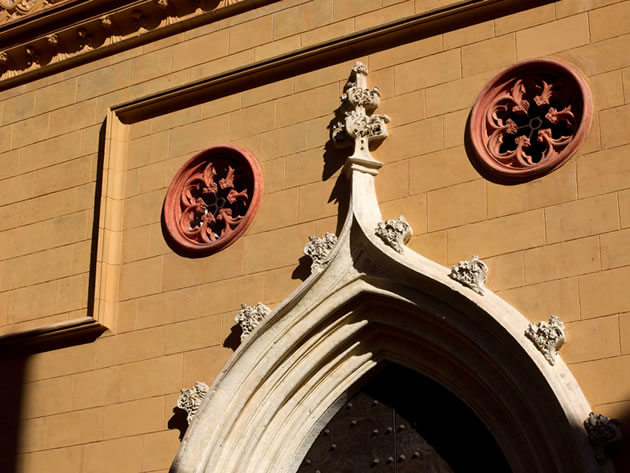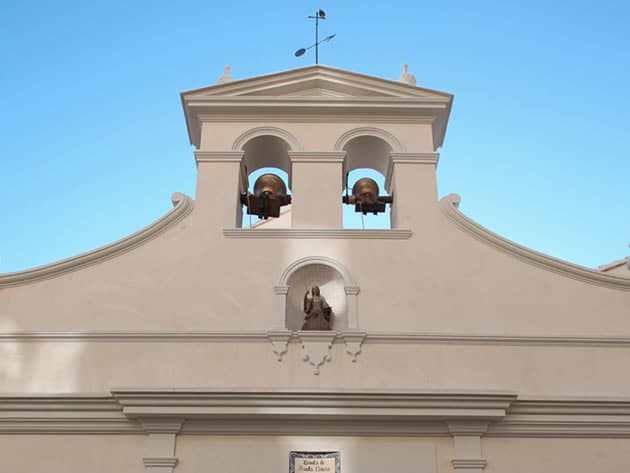Another big project carried out by the Hortensia Herrero Foundation was the restoration of the Church of San Nicolás de Bari and San Pedro Mártir. It is probably the best example of a 15th century Gothic structure coexisting with 17th century Baroque decoration in the city of Valencia. The church was built on top of an old Muslim mosque, in an area that is called ‘the first twelve Christian parishes’. In 1981, it was declared National Historic Artistic Monument. The restoration carried out by the Foundation focused on the façades of the Communion Chapel and on the neo-Gothic façade of Plaza de San Nicolás, as well as on the windows of the church. The neo-Gothic façade presented important problems due to dampness caused by water leaks. Additionally, we also had to deal with the deterioration of the decorative elements of the façade. It also showed an important crack caused by the separation of the upper body of the façade and the side wall, which meant there was a real risk of breaking off.
All the restoration works undertaken were not only aimed at recovering the visual aesthetic aspect, but also at preserving the interior paintings, which undoubtedly would have suffered irreparable damage over time. These paintings are of great value and are considered to be a must-see for anyone visiting the historic center of Valencia. As long as the Communion Chapel is concerned, the main problems were found to be the poor state of the beams and other support elements. The poor condition of the carpentry of the chapel and problematic accessibility caused serious ventilation problems in the premises, and seriously affected the paintings, gildings and coatings in general. After a thorough preliminary study of the different and successive layers of paint that had been applied to the façade throughout its history, we discovered a state that was closer to what the façade must have looked like in the 18th century. The defects of the stained glass windows, notably damaged, were restored and repaired at the architectural level.
The renovation of the stained-glass windows also gave us the possibility of improving the ventilation of the temple, which in turn improved and solved the humidity issues that the church had been suffering from.


